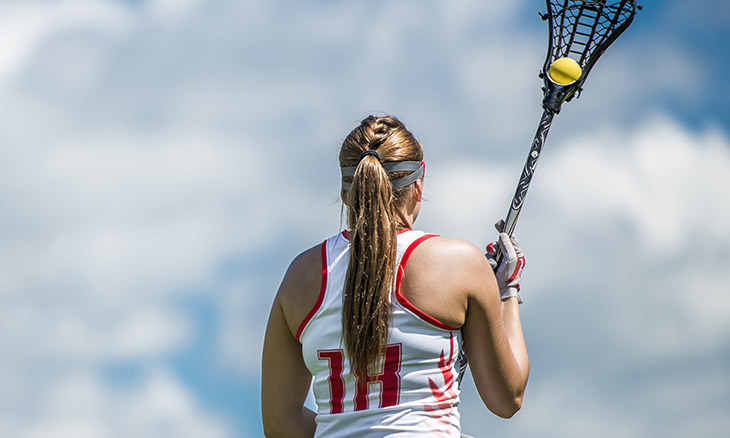
Outpatient Therapy, Staying Active, Seasonal Tips
Keeping Athletes Safe in the Heat
The spring to summer transition can be hard on athletes. They’re bundled in layers on opening day and wearing shorts and a t-shirt by the end of the season. But a wardrobe isn’t the only thing affected by drastic changes in weather. The changes also affect the way an athlete’s body functions and can increase risk of injury if not addressed properly.
With the coldest days behind and the heat beginning to roll in, Bayhealth Athletic Trainer Taylor Hatfield, ATC, shares some ways to prevent injury during the transition and on the hottest days.
Cooling down is equally as important as warming up when it comes to injury prevention. After each practice or game, Hatfield recommends holding static, or still, stretches for at least 30 seconds each. This reduces soreness and increases flexibility. Foam rolling can also be incorporated in a cool down routine to release tension and promote healing.
As the head athletic trainer at Milford High School, Hatfield is dedicated to helping her athletes prevent and recover from injuries using her vast knowledge and experience. Athletes of every age and ability should be sure to utilize professional help when it comes to taking care of their bodies during the unpredictable spring and summer weather.
Visit Bayhealth's Outpatient Therapy page to learn more about how Bayhealth’s outpatient therapy and sports medicine services can help you.
With the coldest days behind and the heat beginning to roll in, Bayhealth Athletic Trainer Taylor Hatfield, ATC, shares some ways to prevent injury during the transition and on the hottest days.
Take it slow
Athletes will want to go all out because the weather is more inviting, but Hatfield advises against this. She says that their bodies need time to acclimate to the hotter, more humid conditions in order to decrease the risk of heat-related illness like heat cramps, heat exhaustion and heat stroke. Once acclimated to functioning in the heat there is less risk of complication. But athletes should always listen to their bodies and slow down when necessary.Stay hydrated
When a body’s temperature increases it starts to excrete water, or sweat. This is its way of cooling itself down. But when water intake doesn’t exceed output, there is high risk of dehydration which can lead to other serious complications. To prepare for practice or games in the heat and humidity, Hatfield recommends that athletes consume at least half their body weight in ounces throughout the day and take frequent water breaks during practices and games.Wear light colors
Contrary to popular belief, the color of material worn has more effect on temperature than the amount of material. Because dark colors absorb heat and light colors reflect it, Hatfield suggests wearing light colors whenever possible. It’s also best to choose fabrics that are moisture-wicking and fast-drying.Remember the basics
It’s imperative to warm up before games or practices no matter the temperature. Hatfield suggests performing dynamic warm ups that stretch muscles while gradually increasing heart rate. This helps prevent strains and sprains and lowers the risk of heat related complications. Some examples of dynamic warmup movements include high knees, walking lunges, jumping jacks and arm circles.Cooling down is equally as important as warming up when it comes to injury prevention. After each practice or game, Hatfield recommends holding static, or still, stretches for at least 30 seconds each. This reduces soreness and increases flexibility. Foam rolling can also be incorporated in a cool down routine to release tension and promote healing.
As the head athletic trainer at Milford High School, Hatfield is dedicated to helping her athletes prevent and recover from injuries using her vast knowledge and experience. Athletes of every age and ability should be sure to utilize professional help when it comes to taking care of their bodies during the unpredictable spring and summer weather.
Visit Bayhealth's Outpatient Therapy page to learn more about how Bayhealth’s outpatient therapy and sports medicine services can help you.
